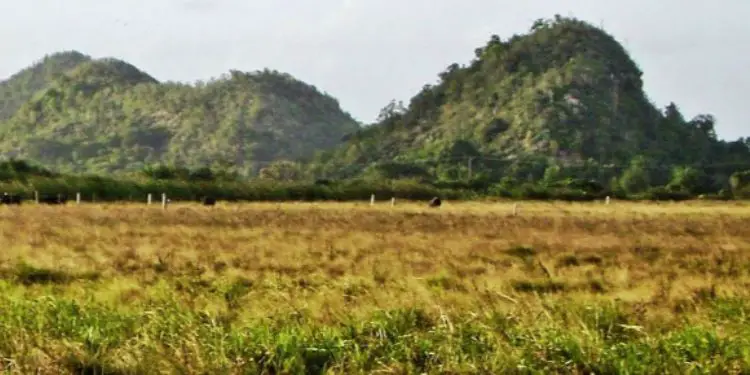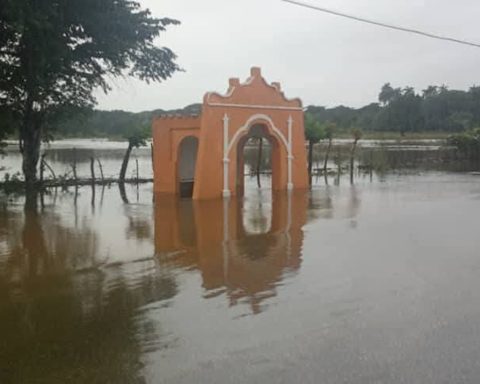MIAMI, United States. – Located in the municipality of Sagua the Greatin the north center of the Island, the Mogotes de Jumagua, a group of eight hills 87 meters high, stand as a natural treasure hidden in the Cuban landscape.
These rock formations, the second of their kind in the country ―only behind Viñales―, were declared a National Ecological Reserve in 1984, but are still unknown to most Cubans.
The road to these majestic mogotes is surrounded by a vast palm grove, formerly the most wooded area in the area, which has now been converted into farmland and livestock. However, the ecological reserve is home to a great biological diversity, including endemic species such as the Palmita de Jumagua or Yuraguancillo, and the showy dwarf oak, both considered plant heritage and in danger of extinction.
The mogotes belong to the orographic group of Alturas del Noroeste, are formed by limestone rocks from the Upper Cretaceous and house an extensive cave system, which serves as a refuge for the unique fauna of the region. These caves, such as La Gruta Verde, La Cueva del Agua, Cueva del Sijú and Cueva de los Lagartos, have been decorated for centuries with pictographs of the Indians who lived in them, adding significant historical value to the place.
In addition to their biological value, the Mogotes de Jumagua have an insurmountable prehistoric and historical value, ranging from fossils found in the area to the remains of visits by corsairs and mambises. For its part, the ancient legend of the pirates who hid a treasure of gold in the caves adds a touch of mystery to the fascinating history of the mogotes.

This jewel of the national system of protected areas covers an area of 362 hectares and offers an impressive contrast with the great plain that surrounds them. The mogotes formations, which are among the most defined in the central region, stand out in the landscape and offer a unique sample of the natural beauty of Cuba.
Despite its ecological richness and its importance for history and science, the Mogotes de Jumagua remain largely unknown to the general public.


















